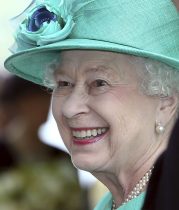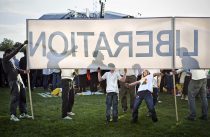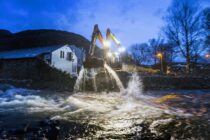Member Galleries
Click a thumbnail to view that image. Click the member's name to view their full profile.

An elderly Palestinian Christian couple stand in the remains of their house after being shelled by the Israeli Army. Beit Sahour, Occupied Palestine...

LONDON, GREAT BRITAIN - APRIL 27: A general view during day three of the FINA/NVC Diving World Series 2014 at the London Aquatics Centre on April 27, 2014 in London, Great Britain. (Photo by Mitchell Gunn/ESPA)

Ashnikko live at Reading Festival, Berkshire, UK

Mercer Henderson live at The Grace

Princess Charlotte at Trooping the Colour

London, UK. 14 November, 2017. Alison Moyet performs at the Paladium.

A regal smile from The Queen as ahe visits The Brockhole visitor centre in the Lake District. PICTURES by MILTON HAWORTH.

Children play under a banner reading "Liberation" at Hyde Park mass on day 3 of Pope Bendict XVI's four day visit to the UK. It is the first time the head of the Catholic church has visited Britain since 1982.

LEEDS, UK. MAY 31ST & JUN 1ST. England vs New Zealand in the 2nd Invested Test Match at Headingley Cricket Ground, Leeds on Friday 31st May & Saturday 1st June 2015. (Photo: Mark Fletcher | Shutter Press)

Great Britain's Jessica Ennis celebrates winning the Heptathlon, after the 800m event during day eight of the London Olympic Games at the Olympic Stadium,London. Dave Thompson/PA

©Andrew McCaren

THE NEW ASTON MARTIN VANQUISH UNVEILED AT PRESS LAUNCH AT ASTON MARTIN'S HQ IN WARWICKSHIRE. PIC PUBLISHED IN THE SUN.

LONDON, ENGLAND - JUNE 05: The Royal Air Force Red Arrows fly in formation over Buckingham Palace as The Royal family stand on the balcony on June 5, 2012 in London, England. For only the second time in its history the UK celebrates the Diamond Jubilee of a monarch. Her Majesty Queen Elizabeth II celebrates the 60th anniversary of her ascension to the throne. Thousands of wellwishers from around the world have flocked to London to witness the spectacle of the weekend's celebrations. (Photo by Peter Macdiarmid/Getty Images)

October 29 - London X League Round 7, Canada Heights, Kent.
© Matt Bristow

UK LONDON. 20th June 2014. Photo Call for the launch of the summer route from London City Airport to Ibiza. ©Andrew Baker

© Licensed to simonjacobs.com. 05/12/2014 London, UK. Kai Diekmann, Editor in Chief of Bild has his beard shaved for charity. Photo credit : Simon Jacobs

Manchester United's Robin van Persie (centre left) scores their first goal of the game with a header. Dave Thompson/PA.







